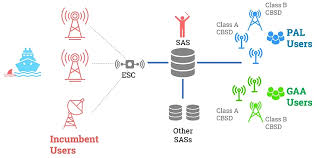VTD (Vehicle Traffic Density): Definition, Measurement, and Impact
telcomatraining.com – Vehicle Traffic Density (VTD) refers to the number of vehicles occupying a specific length of a road at a given time. It is a crucial metric used in traffic management, urban planning, and transportation engineering to assess congestion levels and optimize road usage. VTD is usually expressed in vehicles per kilometer (veh/km) or vehicles per mile (veh/mi), depending on the region.
Understanding VTD is essential for governments and city planners to improve traffic flow, reduce congestion, and enhance road safety. A high VTD indicates congestion, which can lead to increased travel time, pollution, and higher fuel consumption. Conversely, low VTD signifies smooth traffic conditions, which contribute to efficient transportation systems.
How Vehicle Traffic Density is Measured
There are several methods to measure VTD, ranging from manual observation to advanced technological solutions. Below are some of the most common approaches:
1. Manual Counting
Manual counting involves traffic personnel recording the number of vehicles passing through a specific section of the road. This method, while straightforward, is time-consuming and prone to human error.
2. Inductive Loop Detectors
Inductive loop detectors are sensors embedded in the road surface that detect metal objects, such as vehicles. These sensors measure the number of vehicles passing over them and calculate traffic density accordingly.
3. CCTV and AI-Based Systems
Advanced traffic monitoring systems use cameras combined with artificial intelligence (AI) to analyze vehicle movement. These systems provide real-time data on traffic density, vehicle classification, and congestion patterns.
4. GPS and Mobile Data
GPS-based tracking and mobile data analysis help estimate vehicle density by monitoring movement patterns of vehicles and smartphones. This method is useful for large-scale traffic assessments and urban mobility planning.
5. Radar and LiDAR Technology
Radar and LiDAR (Light Detection and Ranging) systems offer high-accuracy traffic density measurement by detecting vehicle positions and movements in real-time. These technologies are often used in smart city initiatives.
The Impact of Vehicle Traffic Density
VTD plays a significant role in transportation efficiency, environmental sustainability, and economic productivity. Here are the key impacts of high and low vehicle traffic density:
1. Impact on Traffic Flow
High VTD often leads to congestion, causing delays and frustration for commuters. It can also increase the likelihood of traffic accidents due to close vehicle proximity. On the other hand, an optimized VTD ensures smooth traffic flow, reducing travel time and improving road safety.
2. Environmental Consequences
Excessive vehicle density contributes to higher carbon emissions and air pollution. When vehicles move slowly or remain idle in traffic, they consume more fuel, releasing pollutants that degrade air quality. Reducing VTD through better traffic management can significantly lower environmental harm.
3. Economic Effects
Traffic congestion due to high VTD has economic implications, including increased fuel costs, loss of productivity, and higher transportation expenses for businesses. Efficient traffic management can enhance economic activities by ensuring goods and services move smoothly.
4. Urban Planning and Infrastructure Development
City planners use VTD data to design better road networks, implement intelligent traffic systems, and develop sustainable public transport solutions. Analyzing VTD trends helps in making data-driven decisions for future infrastructure projects.
Conclusion
Vehicle Traffic Density (VTD) is a vital metric in modern traffic management and urban development. By accurately measuring and analyzing VTD, cities can implement strategies to enhance transportation efficiency, reduce congestion, and minimize environmental impacts. With advancements in technology, real-time traffic monitoring and AI-driven analytics are revolutionizing how traffic density is managed, paving the way for smarter and more sustainable cities.
Optimizing VTD is not just a necessity for reducing congestion but also a crucial step toward building a greener and more efficient transportation system.







